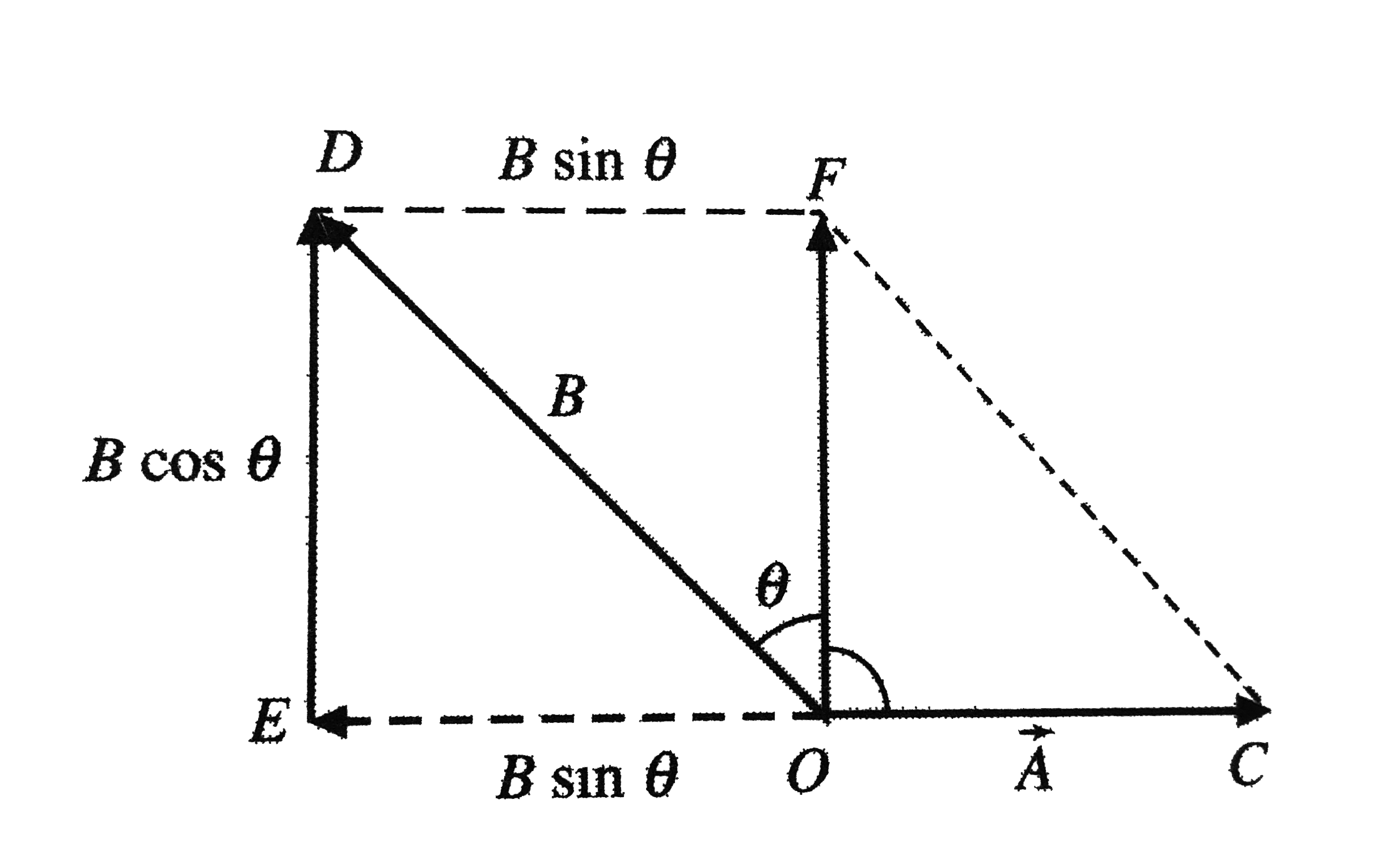Two vectors →Aand→B have equal magnitudes.If magnitude of (→A+→B) is equal to n times of the magnitude of (→A−→B) then the angle between →Aand→B is :-
A
sin−1[n−1n+1]
B
sin−1[n2−1n2+1]
C
cos−1[n−1n+1]
D
cos−1[n2−1n2+1]
Video Solution
Text Solution
The correct Answer is:D
√A2+A2+2A2cosθ=n√A2+A2−2A2cosθ
2A2(1+cosθ)=2A2n2(1−cosθ)
1+cosθ1−cosθ=n2
cosθ=n2−1n2+1⇒θ=cos−1(n2−1n2+1)
|
Similar Questions
Knowledge Check
Two vectors →A and →B have equal magnitudes. If magnitude of →A+→B is equal to n times the magnitude of →A−→B, then the angle between →A and →B is :-
Acos−1(n−1n+1)Bcos−1(n2−1n2+1)Csin−1(n−1n+1)Dsin−1(n2−1n3+1)If ∣∣→A×→B∣∣=∣∣→A⋅→B∣∣, then the angle between →Aand→B will be :
A30∘B45∘C60∘D75∘The resultant of two vectors →A and →B is perpendicular to the vector →A and its magnitude is equal to half of the magnitude of the vector →B. Find out the angles between →A and →B.
 .A120B90C60D150
.A120B90C60D150
The resultant of two vectors →A and →b is perpendicular to the vector →A and its magnitude is equal to half the magnitude of vector →B. The angle between →A and →B is
View SolutionIf →A.→B=∣∣→A×→B∣∣, find angle between →Aand→B.
View SolutionIf ∣∣→a.→b∣∣=∣∣→a×→b∣∣ , then the angle between →aand→b is
View SolutionA magnitude of vector →A,→B and →C are respectively 12,5 and 13 units and →A+→B=→C then the angle between →A and →B is
View SolutionThe magnitudes of vectors →A,→Band→C are 3,4 and 5 units respectively. If →A+→B=→C, the angle between →A and →B is
View Solution